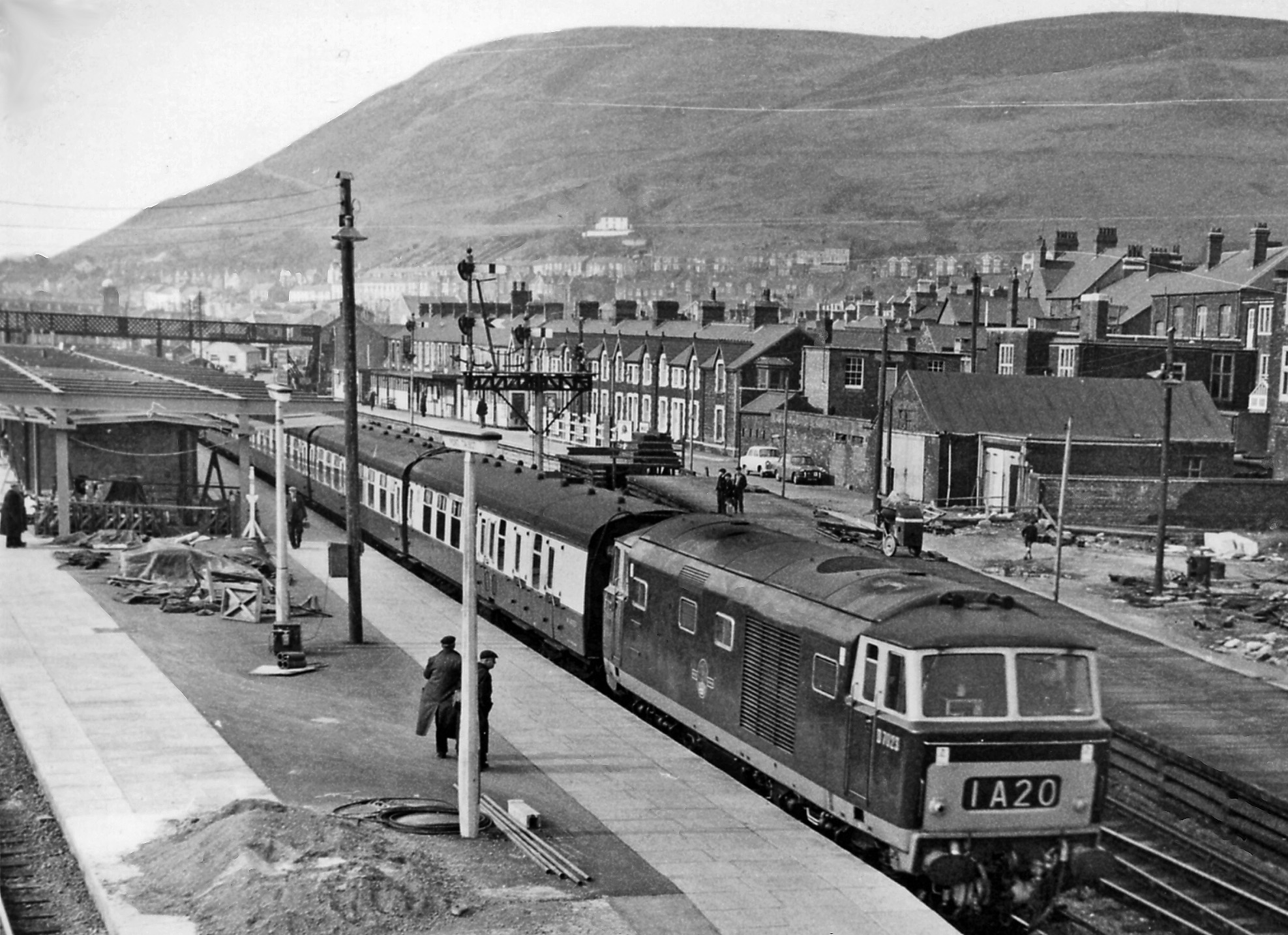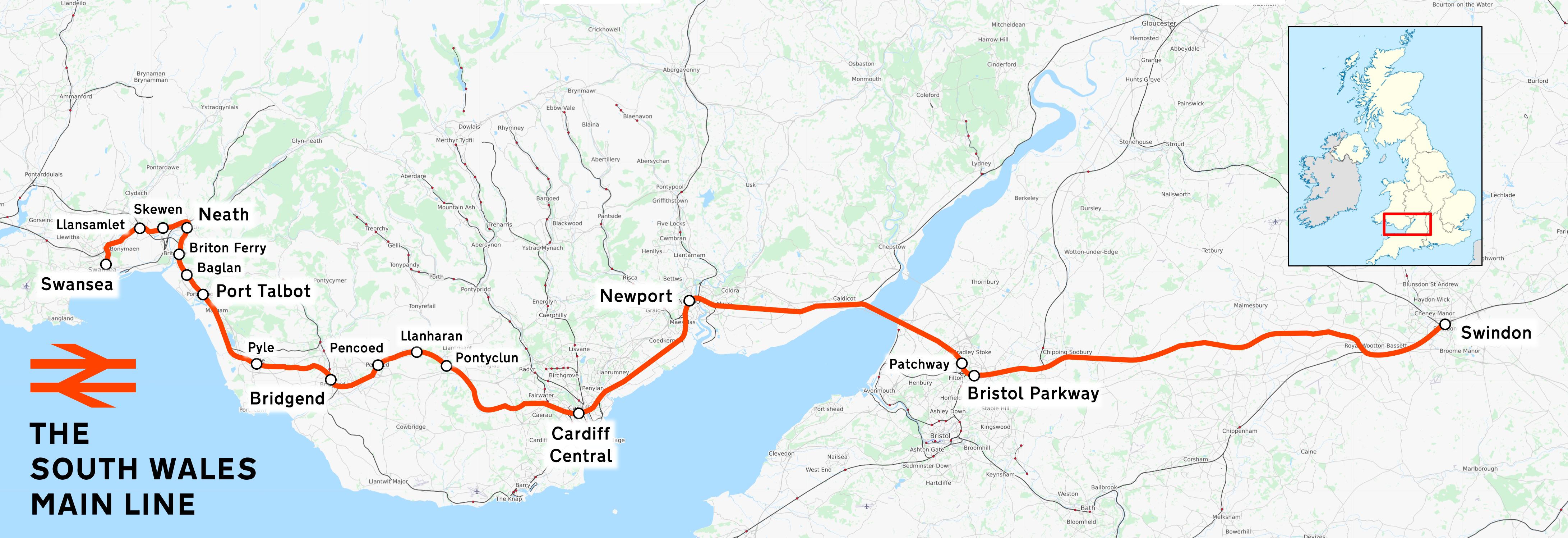|
Pembroke Coast Express
The ''Pembroke Coast Express'' was a named train operated by British Railways which began running in 1953 along with several other services, as a way of better promoting faster or more direct services. In 2006, the name was used by First Great Western to advertise its Summer Saturday service between London Paddington and Pembroke Dock. Current operation Since 2006 First Great Western Great Western Railway (GWR) is a British train operating company owned by FirstGroup FirstGroup plc is a British multi-national transport group, based in Aberdeen, Scotland. [...More Info...] [...Related Items...] OR: [Wikipedia] [Google] [Baidu] |
Great Western Railway (train Operating Company)
Great Western Railway (GWR) is a British train operating company owned by FirstGroup that operates the Greater Western passenger railway franchise. It manages 197 stations and its trains call at over 270. GWR operates long-distance inter-city services along the Great Western Main Line to and from the West of England and South Wales, inter-city services from London to the West Country via the Reading–Taunton line, and the ''Night Riviera'' sleeper service between London and Penzance. It also provides commuter and outer-suburban services from its London terminus at Paddington to West London, the Thames Valley region including parts of Berkshire, parts of Buckinghamshire and Oxfordshire; and regional services throughout the West of England and South Wales to the South coast of England. Great Western Railway also provides and maintains the Electrostar Class 387 fleet for Heathrow Express. The company began operating in February 1996 as Great Western Trains, as part of the pr ... [...More Info...] [...Related Items...] OR: [Wikipedia] [Google] [Baidu] |
British Rail Class 802
The British Rail Class 802 is a type of high speed bi-mode multiple-unit passenger train designed and produced by the Japanese manufacturer Hitachi Rail. It has been operated by Great Western Railway, TransPennine Express, and Hull Trains; each of these train operating companies have given its own units a unique brand; Great Western Railway's units are branded ''Intercity Express Trains'' (IETs), TransPennine Express units are branded ''Nova 1s'' and Hull Trains' units are branded ''Paragons''. The Class 802 is based on the design of the Hitachi A-train, being a member of the Hitachi AT300 product family. It is broadly similar to the preceding Class 800, the primary difference between the two being the installation of more powerful engines and enlarged fuel tanks on the Class 802 to mitigate for their intended usage on lengthier unelectrified stretches of railway. Their introduction by the Great Western Railway facilitated not only the replacement of aging Intercity 125 high s ... [...More Info...] [...Related Items...] OR: [Wikipedia] [Google] [Baidu] |
Railway Services Introduced In 1953
Rail transport (also known as train transport) is a means of transport that transfers passengers and goods on wheeled vehicles running on rails, which are incorporated in tracks. In contrast to road transport, where the vehicles run on a prepared flat surface, rail vehicles (rolling stock) are directionally guided by the tracks on which they run. Tracks usually consist of steel rails, installed on sleepers (ties) set in ballast, on which the rolling stock, usually fitted with metal wheels, moves. Other variations are also possible, such as "slab track", in which the rails are fastened to a concrete foundation resting on a prepared subsurface. Rolling stock in a rail transport system generally encounters lower frictional resistance than rubber-tyred road vehicles, so passenger and freight cars (carriages and wagons) can be coupled into longer trains. The operation is carried out by a railway company, providing transport between train stations or freight customer faciliti ... [...More Info...] [...Related Items...] OR: [Wikipedia] [Google] [Baidu] |
Rail Transport In Wales
Rail or rails may refer to: Rail transport *Rail transport and related matters *Rail (rail transport) or railway lines, the running surface of a railway Arts and media Film * ''Rails'' (film), a 1929 Italian film by Mario Camerini * ''Rail'' (1967 film), a film by Geoffrey Jones for British Transport Films *'' Mirattu'' or ''Rail'', a Tamil-language film and its Telugu dub Magazines * ''Rail'' (magazine), a British rail transport periodical * ''Rails'' (magazine), a former New Zealand based rail transport periodical Other arts *The Rails, a British folk-rock band * Rail (theater) or batten, a pipe from which lighting, scenery, or curtains are hung Technology *Rails framework or Ruby on Rails, a web application framework *Rail system (firearms), a mounting system for firearm attachments *Front engine dragster *Runway alignment indicator lights, a configuration of an approach lighting system *Rule Augmented Interconnect Layout, a specification for expressing guidelines for prin ... [...More Info...] [...Related Items...] OR: [Wikipedia] [Google] [Baidu] |
Rail Transport In England
Rail or rails may refer to: Rail transport *Rail transport and related matters *Rail (rail transport) or railway lines, the running surface of a railway Arts and media Film * ''Rails'' (film), a 1929 Italian film by Mario Camerini * ''Rail'' (1967 film), a film by Geoffrey Jones for British Transport Films *'' Mirattu'' or ''Rail'', a Tamil-language film and its Telugu dub Magazines * ''Rail'' (magazine), a British rail transport periodical * ''Rails'' (magazine), a former New Zealand based rail transport periodical Other arts *The Rails, a British folk-rock band * Rail (theater) or batten, a pipe from which lighting, scenery, or curtains are hung Technology *Rails framework or Ruby on Rails, a web application framework *Rail system (firearms), a mounting system for firearm attachments *Front engine dragster *Runway alignment indicator lights, a configuration of an approach lighting system *Rule Augmented Interconnect Layout, a specification for expressing guidelines for pri ... [...More Info...] [...Related Items...] OR: [Wikipedia] [Google] [Baidu] |
Named Passenger Trains Of British Rail
{{disambiguation ...
Named may refer to something that has been given a name. Named may also refer to: * named (computing), a widely used DNS server * Naming (parliamentary procedure) * The Named (band), an American industrial metal group In literature: * ''The Named'', a fantasy novel by Marianne Curley * The Named, a fictional race of prehistoric big cats, depicted in ''The Books of the Named'' series by Clare Bell See also * Name (other) * Names (other) * Naming (other) Naming is assigning a name to something. Naming may refer to: * Naming (parliamentary procedure), a procedure in certain parliamentary bodies * Naming ceremony, an event at which an infant is named * Product naming, the discipline of deciding wha ... [...More Info...] [...Related Items...] OR: [Wikipedia] [Google] [Baidu] |
Port Talbot Station%2C And Down %27Pembroke Coast Express%27 With A Diesel Geograph-2398862-by-Ben-Brooksbank
A port is a maritime facility comprising one or more wharves or loading areas, where ships load and discharge cargo and passengers. Although usually situated on a sea coast or estuary, ports can also be found far inland, such as Hamburg, Manchester and Duluth; these access the sea via rivers or canals. Because of their roles as ports of entry for immigrants as well as soldiers in wartime, many port cities have experienced dramatic multi-ethnic and multicultural changes throughout their histories. Ports are extremely important to the global economy; 70% of global merchandise trade by value passes through a port. For this reason, ports are also often densely populated settlements that provide the labor for processing and handling goods and related services for the ports. Today by far the greatest growth in port development is in Asia, the continent with some of the world's largest and busiest ports, such as Singapore and the Chinese ports of Shanghai and Ningbo-Zho ... [...More Info...] [...Related Items...] OR: [Wikipedia] [Google] [Baidu] |
First Great Western
Great Western Railway (GWR) is a British train operating company owned by FirstGroup that operates the Greater Western passenger railway franchise. It manages 197 stations and its trains call at over 270. GWR operates long-distance inter-city services along the Great Western Main Line to and from the West of England and South Wales, inter-city services from London to the West Country via the Reading–Taunton line, and the ''Night Riviera'' sleeper service between London and Penzance. It also provides commuter and outer-suburban services from its London terminus at Paddington to West London, the Thames Valley region including parts of Berkshire, parts of Buckinghamshire and Oxfordshire; and regional services throughout the West of England and South Wales to the South coast of England. Great Western Railway also provides and maintains the Electrostar Class 387 fleet for Heathrow Express. The company began operating in February 1996 as Great Western Trains, as part of the pri ... [...More Info...] [...Related Items...] OR: [Wikipedia] [Google] [Baidu] |
British Rail Class 43 (HST)
The British Rail Class 43 (HST) is the TOPS classification used for the InterCity 125 ''High Speed Train'' (formerly Classes British Rail Class 253, 253 and British Rail Class 254, 254) power cars, built by British Rail Engineering Limited from 1975 to 1982, and in service in the UK since 1976. The class is officially the Railway speed record#Fuel-electric, fastest diesel locomotive in the world, with an absolute maximum speed of , and a regular service speed of . The record run was led by 43102 (43302) and trailed by 43159. History and background In the early 1970s, the British Railways Board made the decision to replace its main-line express diesel traction. Financial limitations were tight, so mass electrification was not possible. As a result, a new generation of high-speed diesel trains had to be developed. Experience with the high-speed British Rail Class 55, Class 55 ''Deltic'' locomotives had shown that a low axle weight was essential to avoid damage to the track at ... [...More Info...] [...Related Items...] OR: [Wikipedia] [Google] [Baidu] |
South Wales Main Line
The South Wales Main Line ( cy, Prif Linell De Cymru), originally known as the London, Bristol and South Wales Direct Railway or simply as the Bristol and South Wales Direct Railway, is a branch of the Great Western Main Line in Great Britain. It diverges from the core London-Bristol line at Royal Wootton Bassett beyond Swindon, first calling at Bristol Parkway, after which the line continues through the Severn Tunnel into South Wales. Great Western Railway operates Class 800 trains between London and South Wales, and Classes 253, 254 and 255 High Speed Trains on services between Cardiff and South West England. CrossCountry provides services from Cardiff to Nottingham via Severn Tunnel Junction and thence the Gloucester to Newport Line via Gloucester and Birmingham. Transport for Wales operates services between South Wales, and North Wales and the Midlands on the line. The line between Wootton Bassett and Cardiff Central is electrified using the 25 kV AC overhead system, ... [...More Info...] [...Related Items...] OR: [Wikipedia] [Google] [Baidu] |
Great Western Main Line
The Great Western Main Line (GWML) is a main line railway in England that runs westwards from London Paddington to . It connects to other main lines such as those from Reading to Penzance and Swindon to Swansea. Opened in 1841, it was the original route of the first Great Western Railway which was merged into the Western Region of British Railways in 1948. It is now a part of the national rail system managed by Network Rail with the majority of passenger services provided by the current Great Western Railway franchise. The line has recently been electrified along most of its length. The eastern section from Paddington to was electrified in 1998. Work to electrify the remainder of the route started in 2011 with an initial aim to complete the work all the way to Bristol by 2016, but in that year the section through Bath to Bristol Temple Meads was deferred with no date set for completion because costs had tripled. History The line was built by the Great Western Railway ... [...More Info...] [...Related Items...] OR: [Wikipedia] [Google] [Baidu] |




